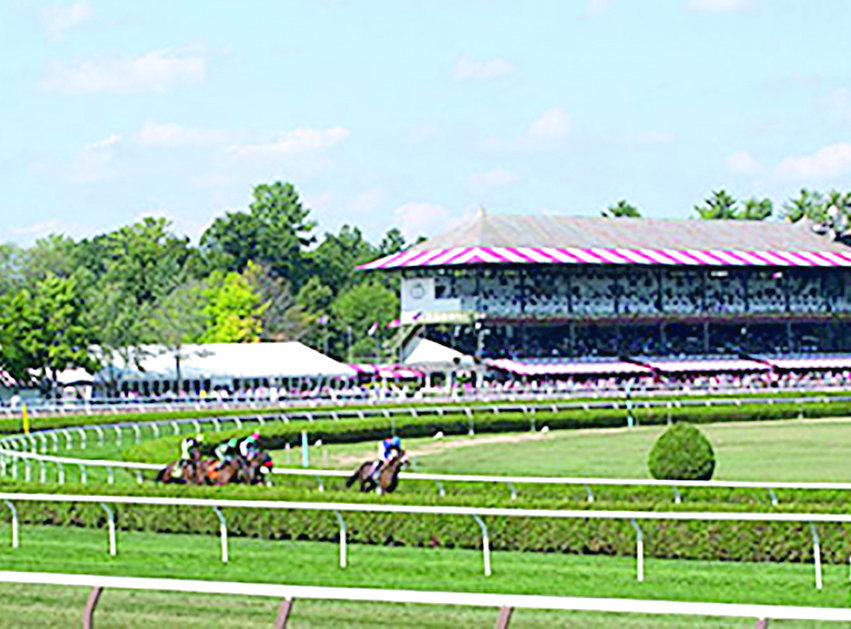
Courtesy NYRA
By R.J. DeLuke
Gov. Andrew Cuomo’s executive budget proposal includes a provision that would return New York Racing Association (NYRA) to private control. While those in the racing industry, including the Saratoga County Chamber of Commerce and the Concerned Citizens For Saratoga Racing, are not satisfied with its content.
Todd Shimkus, president of the Saratoga County Chamber of Commerce, said the governor’s proposal is “a step forward … It’s better than what the governor submitted in 2016, but not something, as written, that we would support.”
In 2012, Cuomo took control NYRA when it was $25 million in debt and had no systematic plan for investing in its facilities and improving customer amenities. A reorganization board was formed and was to serve through October 2015. But in June 2016, after being unable to agree to a legislative deal that would end NYRA’s state-mandated oversight, Cuomo extended state control for an additional year.
There was mounting criticism for failing to return to the private sector control of the organization that operates Aqueduct, Belmont Park and Saratoga.
In late January, the state held a hearing on the matter, at about the same time Cuomo’s budget proposal came out with a new provision for NYRA.
The bill would establish a 15-person board, with six individuals selected by the governor and eight coming from the private sector, plus the sitting CEO. The first chair of the reconfigured board would be selected by the governor.
Under the legislation, there would be no cap on the amount of funds NYRA receives from VLT gaming machines at Genting’s casino at Aqueduct—a revenue source important to the racing industry.
Shimkus, however, said there is a provision in the proposal to allow state government to reassert control of NYRA in the future. There is also language where VLT revenues could be withheld under certain circumstances.
“The folks in the horse racing industry really want the end of state government control,” said the Chamber president. Cuomo’s proposal “really doesn’t accomplish that goal.”
He said the state Senate and Assembly last year passed a bill rejecting the governor’s previous plan to keep privatization in place, but it was rejected.
Nonetheless, “We really appreciate the working relationship we have with the Legislature,” said Shimkus. “We will work with them to get something more favorable to Saratoga and the racing industry.”
He said the best scenario would be to work with Legislative leaders to amend the governor’s proposal to the satisfaction of all, then possibly have it adopted as part of the state budget. If that were to happen, a privatized NYRA could be in place in April.
Negotiations do not always go so smoothly at the state level, but Shimkus said the local groups will continue to work on the issue, regardless.
“Absolutely, without a doubt, it is our number-one legislative priority for 2017,” he said. “You cannot underestimate how important it is to return racing to a governance model that gives the industry and local officials a voice in that governance.”
According to NYRA, 2014 was the company’s first operating profit in 13 years through extensive cost reduction and revenue enhancement programs. It paid off a $25-million loan and is debt free. NYRA saw record revenues and attendance during the 2015 and 2016. Many improvements were implemented at its tracks, especially Saratoga Race Course, and more are planned.
In a statement at the January hearing in Albany, NYRA CEO Chris Kay his organization “is the cornerstone of an industry that employs 17,000 people and generates more than $2 billion in annual economic impact in New York state—primarily in the important areas of agriculture and tourism,.”
“Our annual summer meet at Saratoga Race Course is an engine for the Upstate economy, generating $237 million in economic activity and nearly 2,600 jobs across the greater Capital Region. As a private entity, building upon our recent progress and record of accomplishment, we look forward to growing our sport, our fan base, and our economic benefit to the state of New York,” he said.
Working with 24 different labor unions, NYRA is responsible for 2,400 jobs during the peak summer season and has improved the condition for backstretch workers, officials said.
